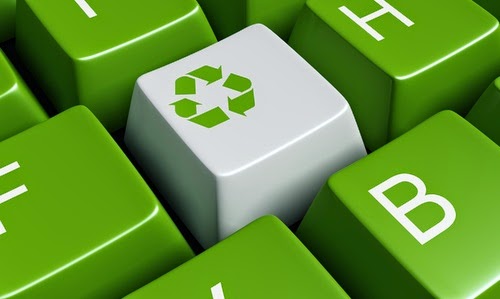
Content that is typically written for users only tends to wear out quickly. The whole idea of making content last is to make it accessible to search engines, and bullet-proof it against future search engine updates like Panda or Penguin. Content here doesn't just refer to articles. It can in the form of infographics or videos as well.
The most important ingredients of making evergreen content are relevance and quality. Here are some techniques you can use to make the most of your pages.
Dated content
Some content is date-relevant, and some is not. It is generally advised to show the date of an article so as to avoid raising certain question in the users' minds, such as whether or not the content is relevant to the user right now?
Take, for example, and example topic; 'top 10 smartphones'. Topics like these get outdated real fast, so a user will probably look at the date first before reading on. Showing the date is a plus in such circumstances.
On the other hand, you might have a how-to tutorial that is a year old, but is still relevant. It is inadvisable to show the date in such conditions. Most bloggers use the date in the URL structure. In such cases, users are likely to navigate away when they see a very old date. So in my opinion, you shouldn't incorporate the date into your URL structure. Instead, just show the date alongside the heading. If your content is not date-centric, then do not highlight it. But at the same time make sure your content (how-tos etc) are up to date.
Update content regularly
Having an evergreen piece of content doesn’t mean that you never touch it again. Even evergreen pieces need an occasional spritz to keep them fresh.
Google’s “freshness factor” prefers pages that are updated frequently. To keep your content active in the index and the SERPs, touch it up now and then. The more content you change or move, the greater the freshness of the article in the search engines.
Also, according to video marketing statistics, videos play an important part in your content strategy success, so don’t forget to include them in your content too.
Also, according to video marketing statistics, videos play an important part in your content strategy success, so don’t forget to include them in your content too.
Highlight updates
Some content deals with subjects that are constantly changing. In this case, you can change your content, too. Simply adjust the content according to the changed subject, and place a note at the top of the article.
Here’s what you can write:
Note: This article has been changed to reflect the new publication that was released in March 2014.
Provide a link to a new article. If your content is truly outdated and can’t simply be spruced up, then you should add a section at the top that explains this.
At the top of the page, add a section stating that the information below has changed, then provide a link to a new page. Like this:
Note: The information below was relevant as of March, 2014. To find out about the latest changes, check out our infographic on this link
If Google is still favoring an old article in the SERPs, this is essential. When a user clicks on that result, an old piece of content, you don’t want him or her to bounce. Instead, you can drive engagement and further dwell time with an open admission of the dated content, with a link to updated information.
What techniques do you apply to your content? And what is your opinion on displaying the date in the URL of a page to highlight it? Leave your comments in the section below!

If you don't want to get yourself into Serious Technical Trouble while editing your Blog Template then just sit back and relax and let us do the Job for you at a fairly reasonable cost. Submit your order details by Clicking Here »

Nice post Bro,thanks for sharing with us,writing post about the current trend will be always considered as a good one,have a nice day
ReplyDeleteHi Qasim,
ReplyDeleteThis is very informative article. I'd like to ask you one question. Isn't there a way to update the blog post date when we update our old articles with Last Updated Date automatically or manually?
Yes when we update blog posts we can give a new updated link or write last updated date.
But when we do this our blog articles contains three dates:
1. URL contains date
2. Blog post - below title
3. When we manually write Last Updated Date
When we update our old articles it contains the same URL and even the post date doesn't change. I think it's better if we could change post URL with the updated date and redirect the old URL to the new one(Without Revert) or at least change the blog post date with Last Updated date.
Also we can write a new blog post and give a link as you said. But it may create a problem. The old post may be getting lots of traffic and the updated link may not get much visitors than that of the old one. And we must update the old post. So if there is any way to update the date in blog post with Last Updated date - it's more than good. Thanks!